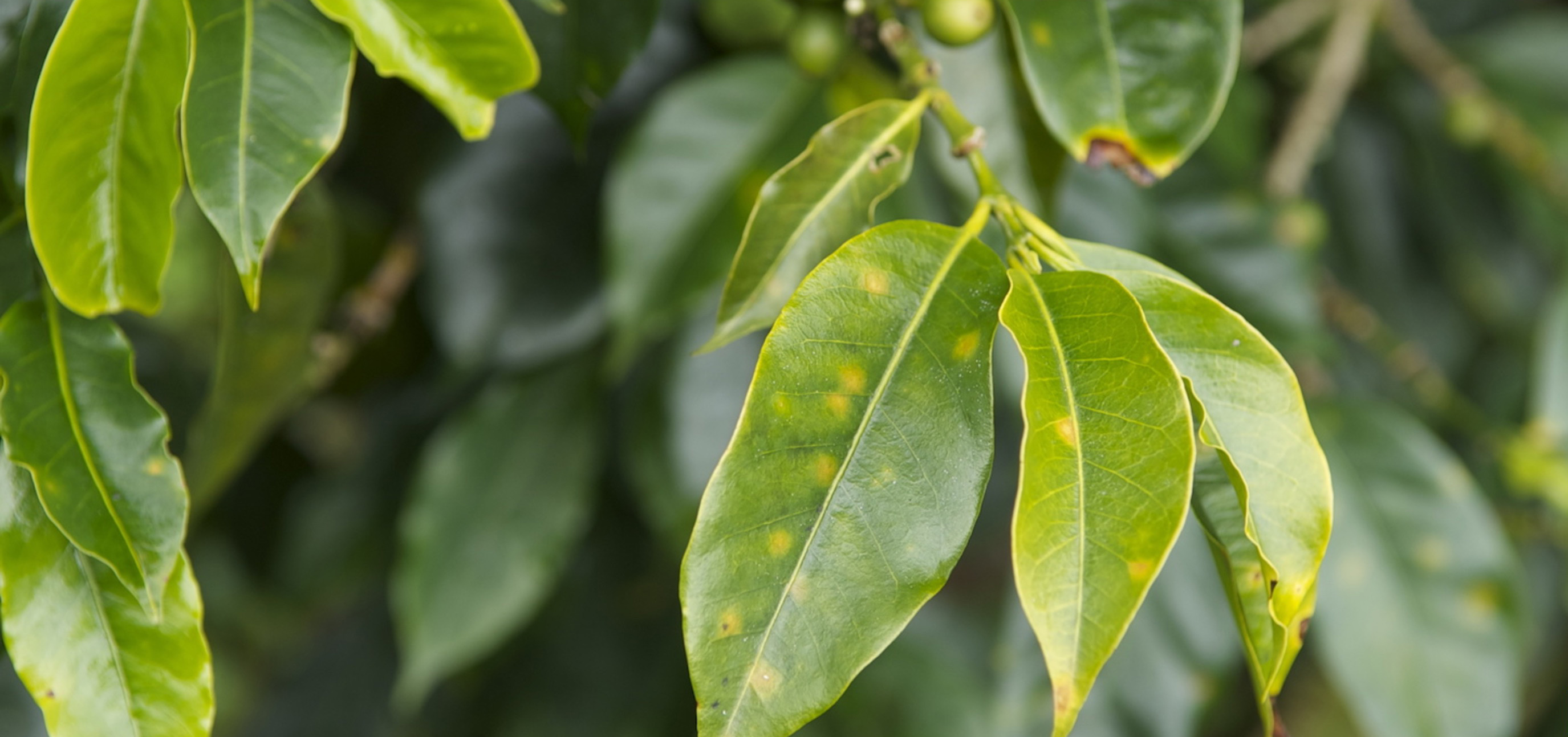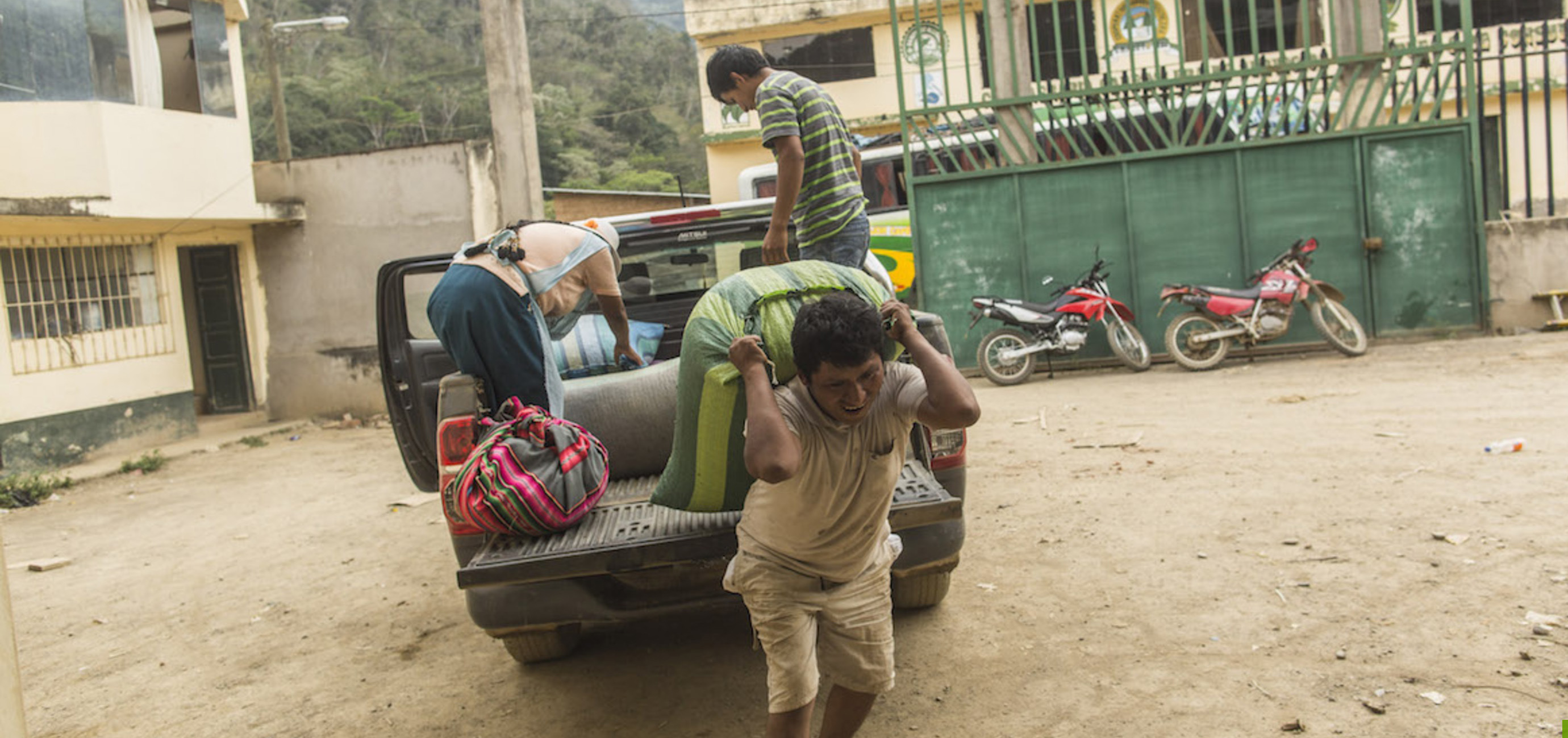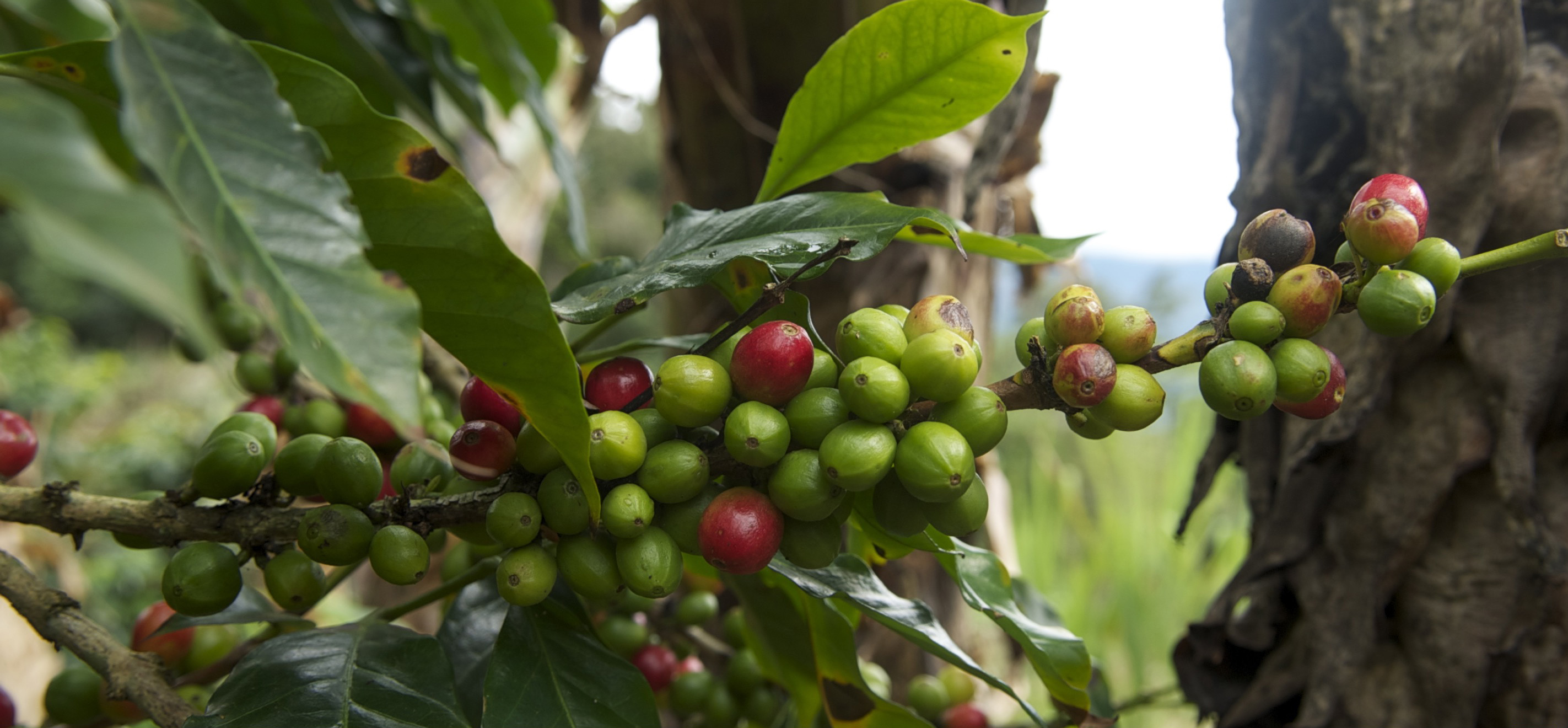- Yellow rust and other diseases attack the crops of what is considered some of the best coffee in the world.
- Farmers in the southern Peru’s Sandia Valley are now beginning to realize that coca leaf is more profitable than customary coffee and citrus.
- About 500 hectares (1235 acres) have been deforested and destined for coca production in Bahuaja-Sonene National Park.
- There are 4,468 hectares (11,000 acres) of coca plantations in Puno, with an annual growth of 10 percent, according to the 2015 Peru Coca Survey submitted in July 2016.
PUNO, Peru – In November 2016, a bus traveling to the district of Putina Punco in southern Peru, deep in the forest and hours from the nearest city, was attacked by thugs with ski masks and long-range weapons. They stole cell phones and all the money that the passengers were going to spend in the traditional Sunday market. There were no deaths or injuries, but the attack left residents of the valley (who are unaccustomed to the sound of gunfire) alarmed.
Typically, this part of the country is known for selling citrus and producing some of the best coffee in the world. But things are changing in the southern Peruvian Amazon.
***
Seventy-year-old coffee grower Teodoro Calle is just over 5 feet tall and his arms and legs look like they are made of solid rock. He goes up and down the mountains like a 20-year-old boy. He pulls a nearly 90-pound coffee trolley through mud and stones with the same ease as a lady pushing a cart at the supermarket. He has lived in the Sandia Valley since he was 13 years old. He finished school when he was 30 and received his law degree when he was 70. He is an example of perseverance.
Calle remembers when they founded the Coffee Cooperative San Juan del Oro and then created the Central Agricultural Cooperative of the Valleys of Sandia (CECOVASA) back in the 1960s, to collect and commercialize their coffee without intermediaries. He never imagined that, in the last two decades, they would be able to sell almost 95 percent of their annual production to England, the United States, Germany, Belgium, the Netherlands and Spain. Nor did he imagine that they would win awards from organizations such as the Specialty Coffee Association of America (SCAA) or the Rainforest Alliance.
Their work has helped their coffee beans earn the reputation of the best in Peru for the last seven years.

However, the years in which Calle produced up to 20,000 kg of coffee annually are long gone. Now he is being optimistic to hope for even 2,000 kg. But he is up against more than one formidable opponent, including Mother Nature.
“I cling to the coffee, but the yellow rust has killed our crops and there are fewer people working on the land,” said Calle. “It is no longer profitable. They are instead switching to coca.” Yellow rust is a fungus that attacks and sometimes kills coffee leaves. When there is an outbreak, this deadly disease can seriously affect Peruvian production destroying coffee plantations and damaging the economy of families who depend on coffee for a living.
According to CECOVASA figures, in the area of Tunkimayo — a couple of hours from Teodoro’s house — in the last five years alone the number of active coffee farmers has decreased drastically, from 60 to only six. “Nobody can live only from coffee these days.

According to the latest 2015 Peru Coca Survey submitted in July 2016 by the National Commission for Development and Life without Drugs (DEVIDA) and the United Nations Office on Drugs and Crime (UNODC), there are 4,468 hectares (11,000 acres) of coca plantations exclusively in Puno, with an annual growth of 10 percent. According to the National Service of Natural Areas Protected (Sernanp), 358 of those hectares are situated within Bahuaja-Sonene National Park, although other organizations, such as USAID, say it is closer to 500 hectares.
Putina Punco is an Andean community perched in the Amazon, complete with picturesque adobe houses and rooftops made of Andean tile. The majority of inhabitants came from the Peruvian cities of Puno and Juliaca or from Bolivia, and they imported their traditions as well.
“In the last years, it has grown a lot. Everything that did not grow in decades did it in the last five or ten years. Even nightclubs are there,” said Patricio Mamani, who seeks to create his brand of coffee: Bird-friendly Café, to encourage his neighbors to look for more alternatives closer to coffee, nature, and farther away from coca.

Natural richness
The Sandia Valley, in the Amazon of Puno, is made up of two important basins belonging to the Tambopata River and the Inambari River. The Bahuaja Sonene National Park in southern Peru connects the Peruvian protected natural areas with those of Bolivia, and borders the Madidi National Park (Bolivia) and the Tambopata National Reserve (Peru).
This protected area has rich biodiversity: it is home to more than 173 species of mammals (34 percent of Peru) and 680 species of birds (37 percent of Peru) have been registered. It was created in 1996 and its nearly 1.1 million hectares is home to varied habitats, which are located between 200 and 2,450 meters above sea level.
“I can say that almost 99 percent of the park’s territory (Bahuaja Sonene) is in a good state of conservation,” said David Aranibar, head of the Bahuaja Sonene National Park. “The indigenous community of Kotsimba encouraged mining activity inside the park, but after much discussion with them, they withdrew their machinery and did not move further into the park.”
Aranibar said that he is more worried about the advancement of coca leaf plantations inside the park and its buffer zone. In the latter, more than 2,500 hectares of coca crops have already been identified.

According to a DEVIDA and UNODC report, seizures of chemical inputs and cocaine paste in Inambari (Masiapo, Pampa Yanamayo, Isilluma) and Tambopata (Sandia, San Juan del Oro, Putina Punco) have increased since 2004. The report also confirms that the drugs are transported outside the country via Puno and Juliaca, which link directly to Bolivia.
In only two interventions in the Sandia Valley, in April and August of 2016, the Peruvian national police seized 3,800 gallons of fuel and more than 20 tons of lime that were destined for cocaine production.
Pedro Yaranga, drug trafficking specialist, confirmed the possibility that this activity will continue to expand in this part of the Amazon.
“The government must warn about drug trafficking in Sandia,” Yaranga said. “This is a serious threat to Puno because it borders Bolivia where the Sinaloa cartel operates.” The Sinaloa drug-trafficking cartel is the most powerful in the world and Yaranga confirms that it controls activity in the so-called “White Triangle” of Latin America, comprised of Colombia, Peru and Bolivia.
In 2015, the Monitoring of the Andean Amazon Project (MAAP) registered a clandestine runway inside the Bahuaja Sonene Park.
“When they install the runways you can draw several conclusions. I think the most important conclusion is that not only are they flying cocaine paste, but also cocaine hydrochloride,” Aranibar said. “There are no flights just for cocaine paste. That indicates that there are laboratories that are processing it. We are entering another level of drug trafficking, and it worries me that the activity will continue growing. It is time to act and stop it before it is uncontainable.”
He also confirmed that there are new cocaleros — coca leaf growers— in the area “everyone who escapes from the VRAEM (valley of the rivers Apurímac, Ene and Mantaro) are settling here instead, where there is vague state control due to its location and poor communication.”
Changes in the Sandia Valley are noted every year.

On a recent trip to Putina Punco district, 4×4 pickup trucks, which were scarce a few years ago, have now taken over the streets. Bars and night clubs are proliferating, as well as prostitution and alcoholism.
Patricio Mamani, a coffee farmer in the Sandia Valley and former president of CECOVASA described the changes as night and day.
“There were no cars before. The town was small,” Mamani said. “Everything was very quiet and everyone helped you. You could see everyone carrying their coffee beans, happy. Everything has changed. Not only the weather but also the people. Nobody wants to work with coffee crops anymore; there is no labor, everyone works at the coca fields where they gain up to five times more than they did with coffee crops.”
Mamani promoted the fair trade certification that coffee producers in this part of Peru have had for the past couple of decades. For him there is still joy in coffee farming.
“I come out of my farm, and I listen to the birds sing,” he said. “Coffee makes me happy.”
In 2014 park rangers detected the construction of a landing field inside the park by the rural community of Colorado that illegally invaded the protected territory.
“We received death threats,” said Aranibar, head of the Bahuaja Sonene National Park. “We were sent letters saying that they would not be held responsible for the mishaps the rangers who entered their territory could have. That is why we decided to remove the rangers by the end of 2015 and only carry out monitoring activities in the area.” In May 2016, the Regional Government of Puno declared the invalidity of the Colorado rural community and the park rangers returned to their checkpoints.
Alternatives
While the assault was taking place in Putina Punco, Javier Cahuapaza Mamani, CECOVASA’s general manager, was on a flight back to Peru from Seoul, South Korea. He had spent the weekend with a CECOVASA committee showcasing the benefits of his world-renowned coffee at the prestigious Café Show in Korea, which brings together the world’s main coffee producers and companies. He could not imagine what was happening back home where his colleagues are struggling to continue producing coffee.
“Everything we produce, we sell. Nothing stays with us. The problem in recent years has been diseases such as rust, and other insects that are affecting crops. And well, coca leaf is also a factor that affects the production of coffee,” Javier said.
One of the worst years in decades was 2014, when barely 570,000 kg was produced among all the coffee farmers of Sandia. Before 2011, the average production was never lower than 10,000,000 kg. The sharp downturn pushed coffee growers to shift toward other activities.
“The idea is that they can complement their coffee with other crops that are not coca leaves, or with ecotourism,” Aranibar said. “We are working together with other organizations, such as the Wildlife Conservation Society (WCS), the municipality of Putina Punco, CECOVASA, Putina Punco Agroforestry Project, to improve coffee crops and also give people more alternatives.

On the other hand, the WCS in Lima, an international organization that works to support the conservation of the Greater Madidi-Tambopata landscape, which Peru and Bolivia share, works on a project that seeks to promote the potential of the area.
“The efforts we carry out are mainly aimed at encouraging sustainable activities that ensure the maintenance of forest cover in the buffer zone and the area of influence of the Bahuaja Sonene National Park,” said Loyola Escamilo, director of the Peruvian Madidi-Tambopata Landscape WCS project in Peru. “This is the case with coffee. WCS works to strengthen coffee cooperatives in the area and to position the coffee farmer as a key player in the dynamization of the local economy.”
Escamilo notes that the coffee is unparalleled in quality.
“This special high-quality coffee is grown by about 8,000 Quechua and Aymara families, and to date, they have made it one of the best in the world,” he said. “As a country we must also promote the development and improvement of conditions in health, education, environmental and forest management in this area with rich biodiversity and high-quality coffee while supporting coffee farming against rust and other diseases.”
DEVIDA is working with Sandia Valley residents to solve this problem. In 2015, they planted 200 new hectares of cocoa, as well as 100 of yellow maize and another 100 of beans, offering more alternatives to illegal coca leaf cultivation. They also distributed more than 2 million forest seedlings to help reforest these areas. They are also giving farmers land titles; they have organized workshops, fairs, contests, outdoor film screenings and various ways to promote drug-free forests and achieve a better quality of life for the people living in this corner of Peru.
Other organizations such as the Ministry of Agriculture and Irrigation (MINAGRI), the United Nations Development Program, the Inter-American Development Bank (IDB), the National Coffee Board, and the Peruvian Chamber of Coffee and Cocoa, are also working in the surroundings of the National Park Bahuaja Sonene strengthening the capacities of the coffee producers and also trying to get rid of the yellow rust and other diseases that have greatly reduced the crops.
This story was reported by Mongabay’s Latin America (Latam) team and was first published in Spanish on our Latam site on November 29, 2016.
FEEDBACK: Use this form to send a message to the author of this post. If you want to post a public comment, you can do that at the bottom of the page.